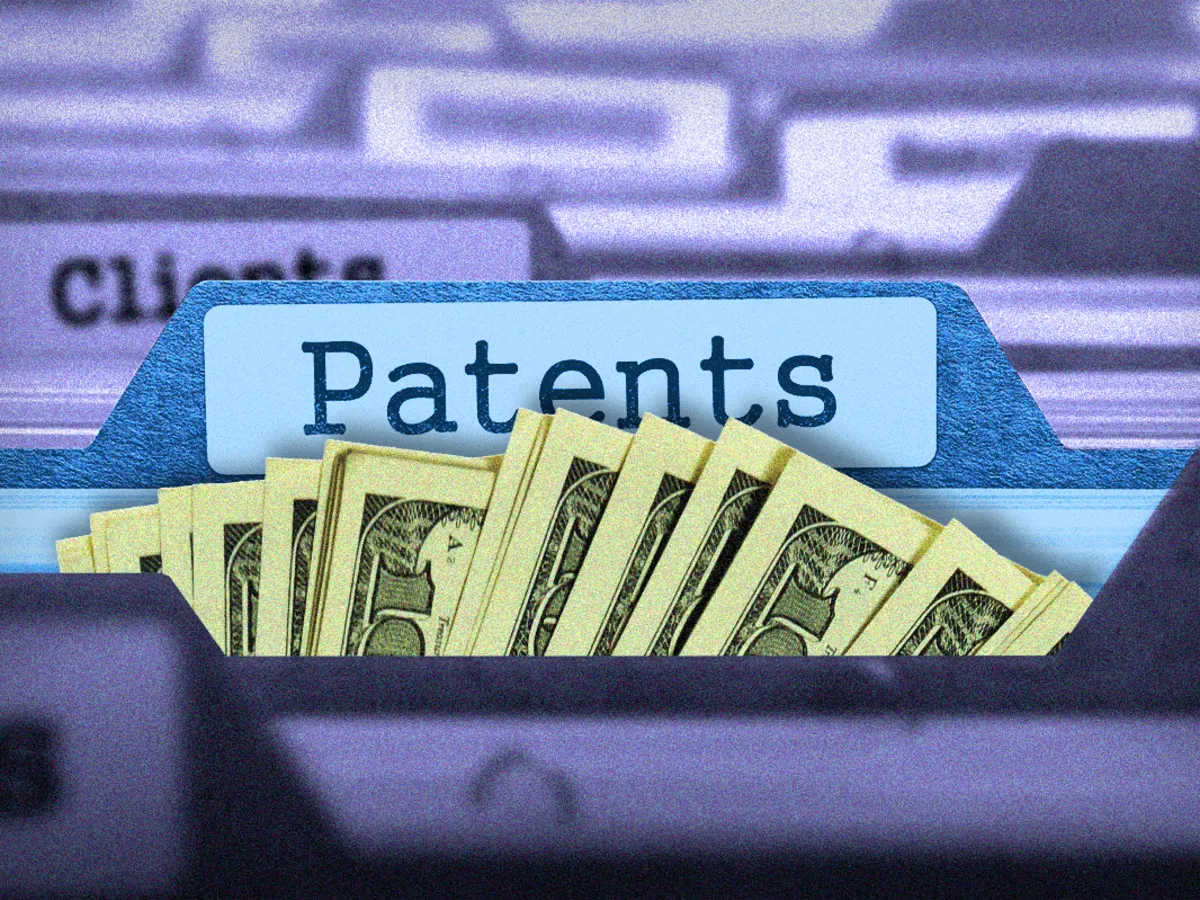
How much does it cost to get a patent?
“Entrepreneurs should consider what their budgets can afford in terms of initial patent filings, but never rely on a patent filing that hasn't had the benefit of expert patent lawyer review.”
How much does it cost to obtain a patent?
Is there a one-size-fits-all patent strategy? Unfortunately, this is not the case. Patents vary greatly in form, complexity, coverage scope, description length, etc. Consequently, the cost question is dependent on a number of crucial factors. Choosing between a design patent and utility patent, whether to start with a non-provisional or provisional application filing, how soon you need to see a final result, and whether you wish to seek international protections all play a role in determining costs. The below summarizes some of the costs that you can expect to encounter during the process of patent prosecution.
How much does it cost to submit an application for a patent?
In general, initial filing costs are simpler to estimate than ongoing costs. Remember that these initial filing estimates do not include patent searches or rejection responses. The initial cost of submitting a patent application is comprised of two primary components:
Legal fees, and
out-of-pocket expenses, including USPTO fees and patent drawing illustrator fees.
The USPTO provides a listing of its fees for patents at this link: https://www.uspto.gov/learning-and-resources/fees-and-payment/uspto-fee-schedule
How much does it cost to file a design patent application?
Unlike a utility patent, which provides protection for the way something works, a design patent protects the way something looks. In general, the scope of protection offered by a design patent is narrower than that of a utility patent, though there are exceptions. A robust IP protection strategy for a product incorporates both design and utility patent protections.
The design patent application costs approximately $1,250 to $1,750 to prepare and file. Following a search, you can expedite a design patent application for an additional $2,300 by filing a Rocket Docket request.
Design patents are much less expensive than utility patents, but they do not protect the functionality of your invention (how it works).
How much does the filing of a design patent application cost?
Over 85 percent of design patent applications in the United States are granted. Therefore, it is reasonable to assume that your typical application for a design patent will not incur significant ongoing costs beyond the payment of the issue fee. Therefore, small entities might anticipate paying around an additional $1,100 for the issue fee.
How much does it cost to file an application for a utility patent?
Working with a patent attorney to draft and file a utility patent application (non-provisional) will generally cost between $7,500 and $20,000 depending in part upon the scope and complexity of the invention.
Entrepreneurs should consider what their budgets can afford in terms of initial filing. Typically, Schell IP provides a quote for a flat fee for utility and design patent application drafting and filing. After filing a patent application, your invention gains "patent pending" status. While patent pending and over the course of several years typically, there may be time to raise funds or commercialize the invention in order to cover the ongoing expenses outlined below.
How much do provisional patent applications cost?
Typically, provisional patent applications cost around $4,000-$8,000 to prepare and file with the assistance of a patent attorney. There are a number of non-attorney services that may be able to generate less expensive provisional patent applications, though often these provisional patent applications lack the substance needed to provide "enablement" for the invention as required by the patent office during patent prosecution. In our experience, inexpensively drafted provisional patent applications are unreliable and result in increased costs at the utility/non-provisional filing within a year of filing the provisional patent application. In other words, the cost balances out, and the quality suffers at the front end if you prepare and file a weak patent application for your invention. You should weigh the pros and cons of either approach.
We do generally caution entrepreneurs to be wary of relying excessively on inexpensive provisional patent applications. Provisional applications will not result in granted patent rights unless you file a non-provisional application in a timely manner. Provisional patent applications do have the advantage of offering "patent pending" status, but cannot on their own manifest into a patent without the subsequent filing of a utility (non-provisional) patent application.
How much does the filing of a utility patent application cost?
With utility patent applications, ongoing costs are inevitable. The question is not whether there will be extra expenses, but rather how much. In contrast to design patent applications, which are typically highly certain, utility patent applications are highly unpredictable. Be prepared for the unexpected when submitting utility patent applications.
Your utility patent application will probably be rejected by at least one Office Action. Depending on the technology, your utility patent application could face an initial rejection rate of up to 90%. A response to an Office Action rejection with the assistance of a patent lawyer generally costs between $1,500 and $3,500, excluding USPTO fees for time extensions and excess claims.
During the prosecution of a utility patent application, it is not uncommon to encounter two or more Office Actions. Your patent attorney may need to conduct an Examiner Interview at some point in order to make progress. In many cases, you can expedite review of a utility patent application for additional fees (~$1,500) to the patent office.
Consequently, ongoing expenses for an application for a utility patent can range from $5,000 to over $30,000. The upper limit of this spectrum might include an appeal to the USPTO's Patent Trial and Appeal Board (which sometimes can be avoided with better preparation of the initial patent application). Appeals are certainly an expensive proposition, which is a reason to ensure that you start with a well-drafted patent application from the start, with the assistance of a qualified patent lawyer.
How much does it cost in total to obtain a patent?
While the ongoing costs of patent prosecution may be uncertain, having a general idea of the overall costs of the patent procedure over the course of several years will help you understand what you're entering into. Remember that outliers will always exist. For the vast majority of patent applications handled by our company, the following approximate timelines and estimates would be applicable:
Design patent: between $2,000 and $4,000 in total over 1-2 years
Utility patent: between $15,000 and $45,000 in total over 1-4 years (Of which, typically $5,000-$10,000 in fees occur during the first year, resulting in "patent pending" status. The remaining costs are spread out over the remainder of the timeframe).
If the prospect of spending up to $45,000 to obtain a utility patent causes sticker shock, it is best to be aware of this possibility beforehand.
Why are the costs of utility patents so unpredictable?
Simply stated, the vast majority of utility patent applications will be denied at least once. According to this Yale study of utility patent applications filed between 1996 and 2005, more than 86% of all utility patent applications received a first rejection known as a non-final Office Action, and more than 38% of all utility patent applications received a second rejection known as a Final Office Action.
Therefore, it is likely that your claims will be rejected based on the patent office's considerations of previously invented items disclosed in other patent applications and elsewhere. When this occurs, each Office Action response typically costs in the range of $2,000-$5,000. The objective is to obtain an allowance after responding to a single Office Action, but it is common to receive multiple Office Actions. You also must balance the quality of the claims that you might obtain after an office action against the costs of arguing for better claims with additional proceedings.
The recently reported high allowance rate of approximately 84% makes design patent costs much more predictable.
How much does an international patent application cost?
The costs of foreign patents vary considerably by country. Each foreign patent office has its own set of local regulations and examination procedures. Depending on the number of foreign countries desired, the cost of an international patent family can easily exceed $100,000. There are methods to expedite international patent prosecution in order to reduce the costs of foreign patents.
For roughly $4,000 to $7,000, you can file a single PCT patent application with the assistance of a patent lawyer to obtain patent-pending status in several foreign countries.
Finally - highly regarded blogger IP Watchdog (with no affiliation to Schell IP) has separately summarized the costs associated with obtaining a patent. While the content is somewhat dated (from 2015), it does summarize the costs from another viewpoint. If you would like to consider another admired commentator's view on patenting costs, please check it out here: https://ipwatchdog.com/2015/04/04/the-cost-of-obtaining-a-patent-in-the-us/id=56485/
Schell IP is committed to transparency and offering the highest quality services to its clients. It is led by one of the more experienced patent lawyers in Colorado, Jeff Schell. Prior to founding Schell IP, Jeff led multiple multi-million dollar companies on the strength of the IP portfolios that he developed - successfully exiting two of them. He now works with innovators from his base in Colorado as a patent lawyer and innovation coach.
If you would like to discuss a specific product concept requiring patent protection or speak with a patent lawyer, feel free to contact the Schell IP team.
If you would like to discuss a specific product concept requiring patent protection or speak with a patent lawyer, feel free to contact the Schell IP team.
The content of this website is not intended as legal advice. If you have any question pertaining to a specific matter, speak with an attorney.

